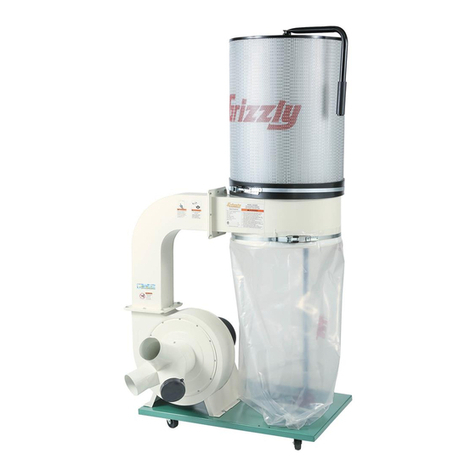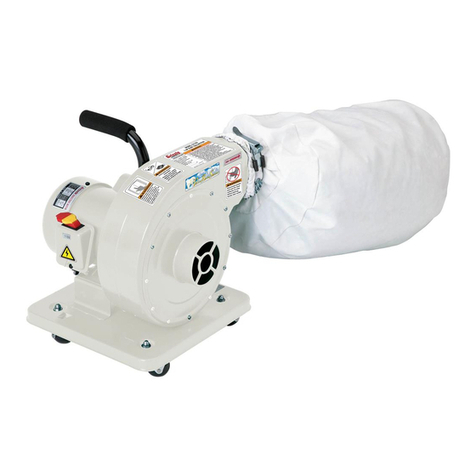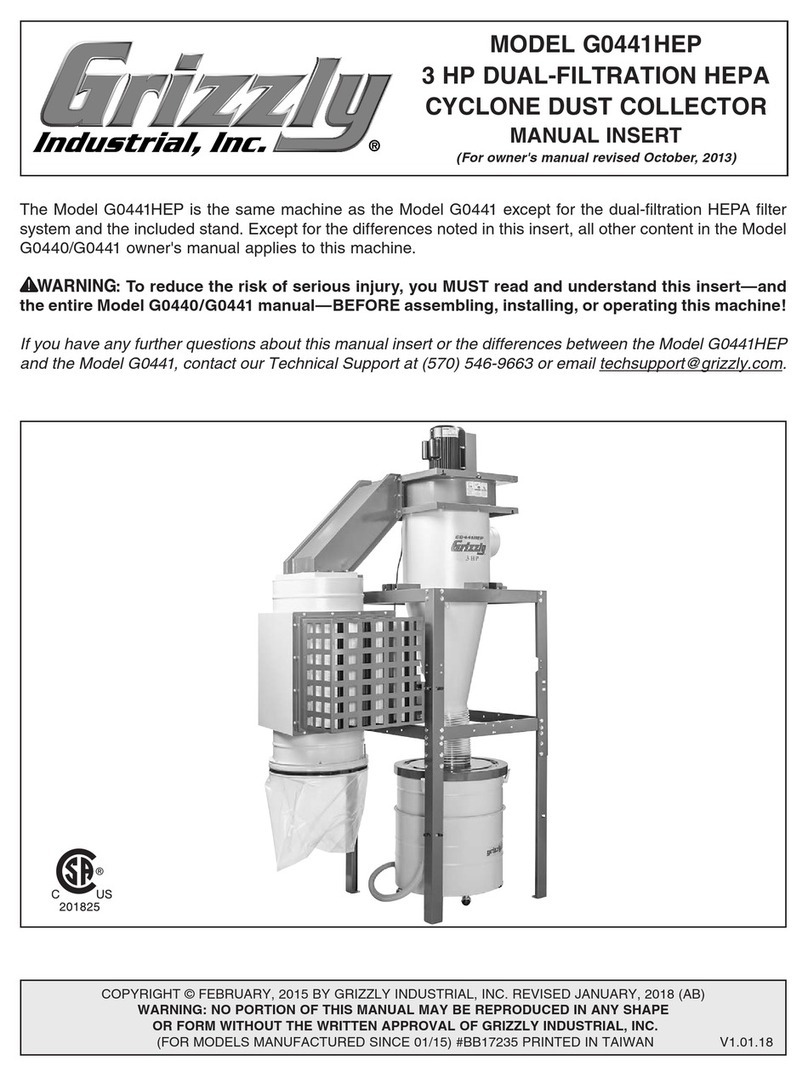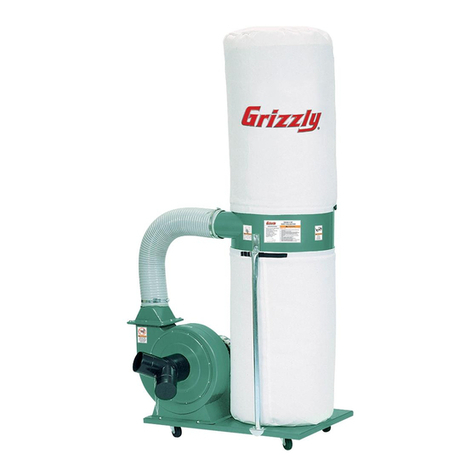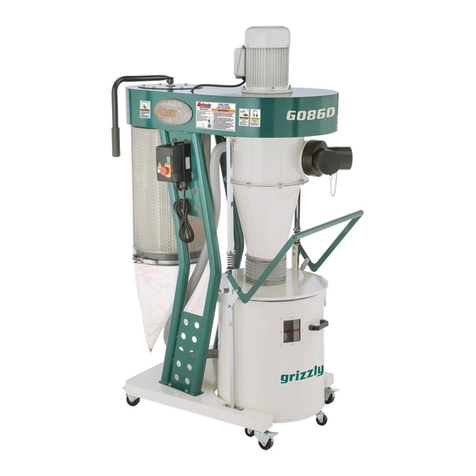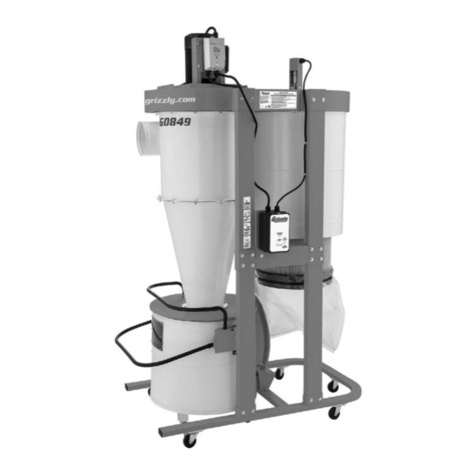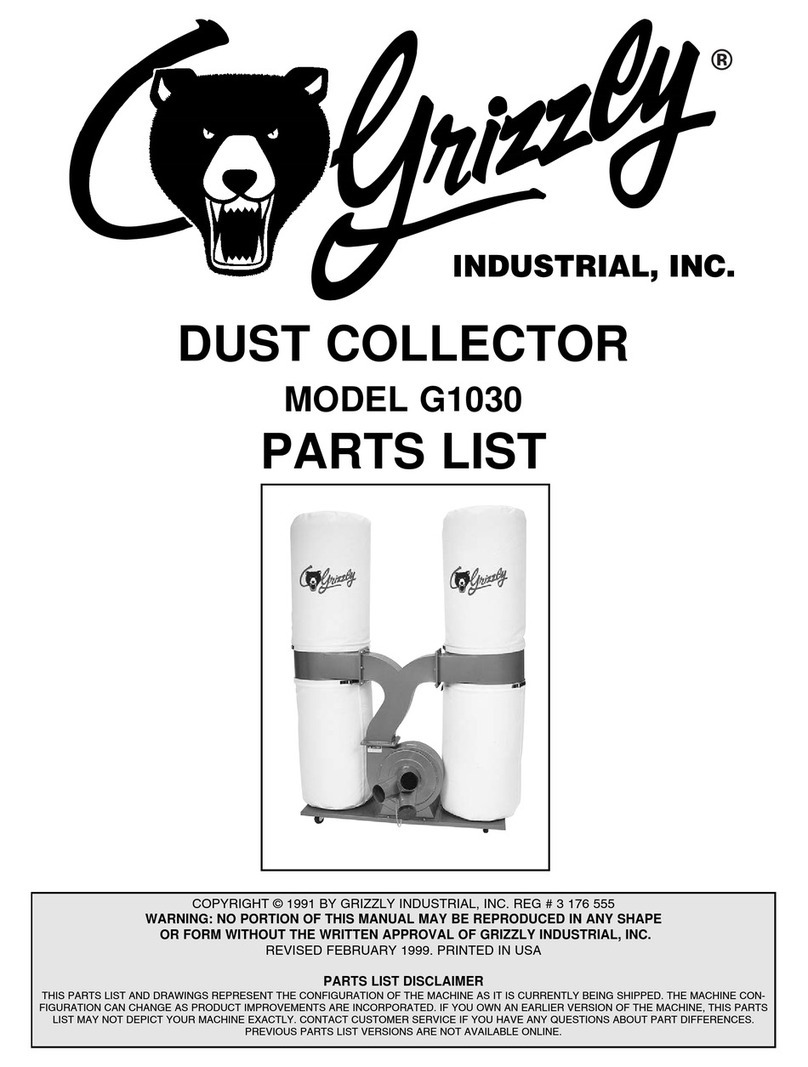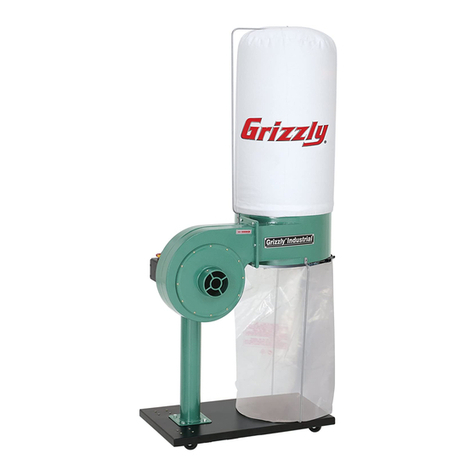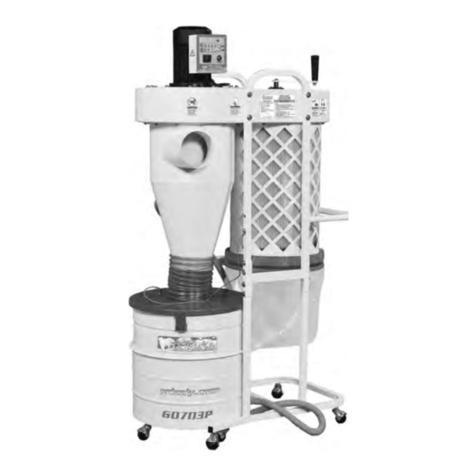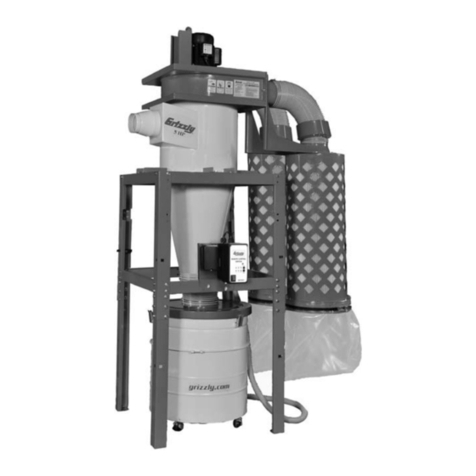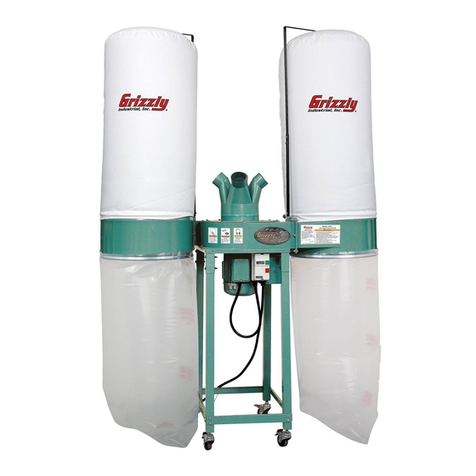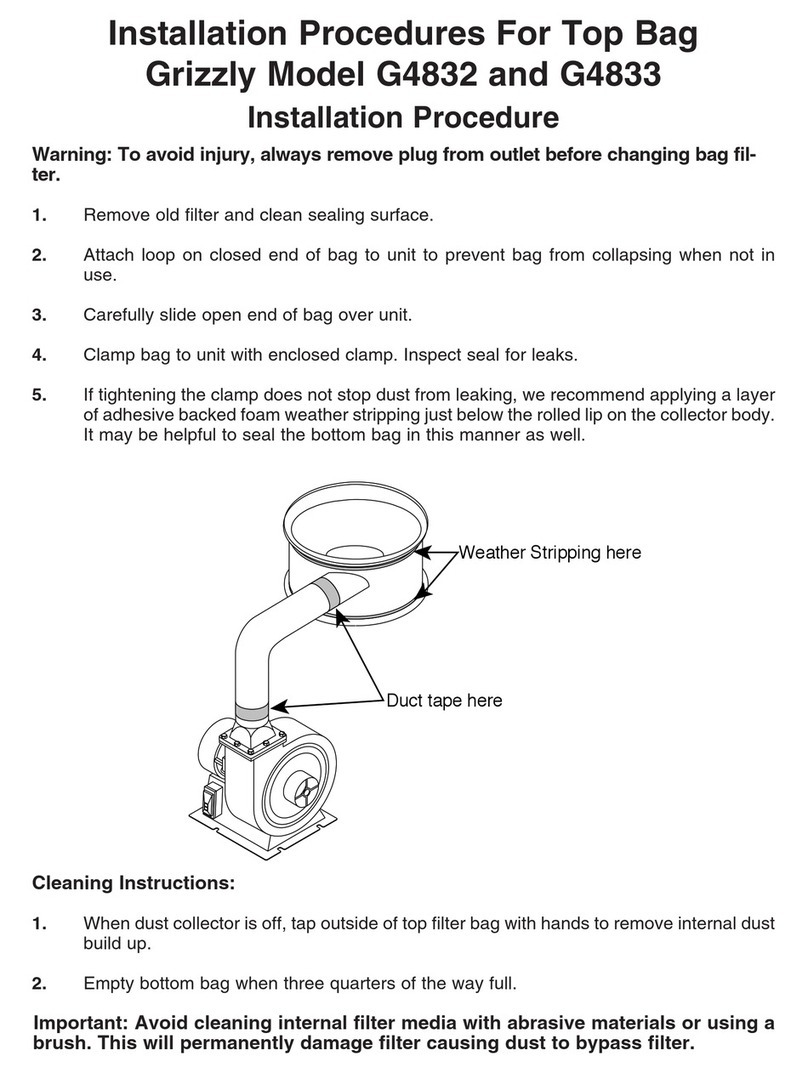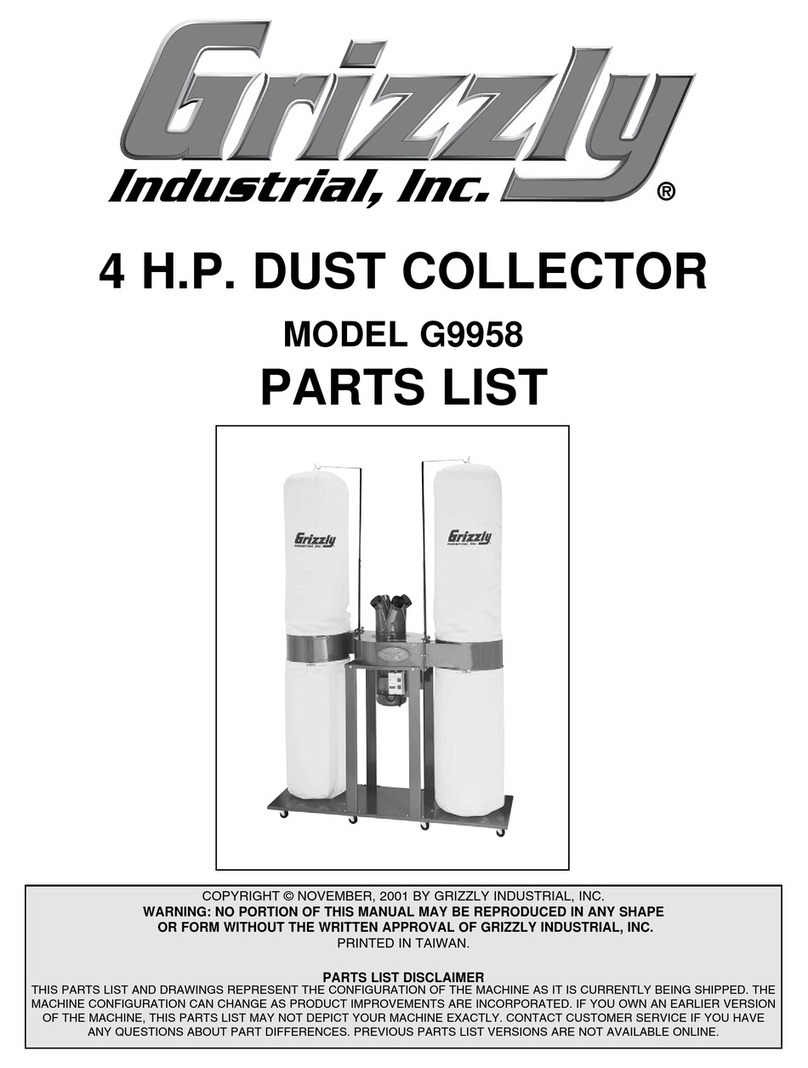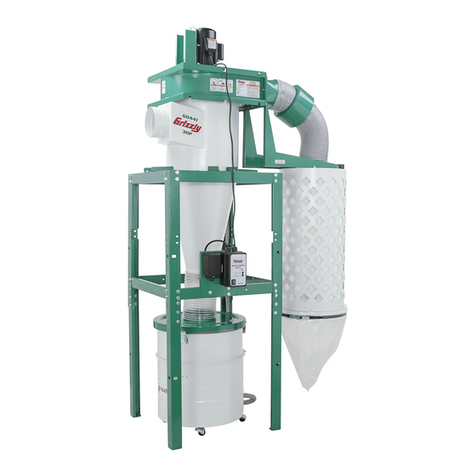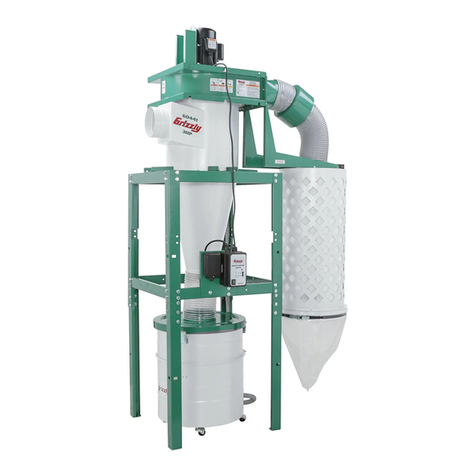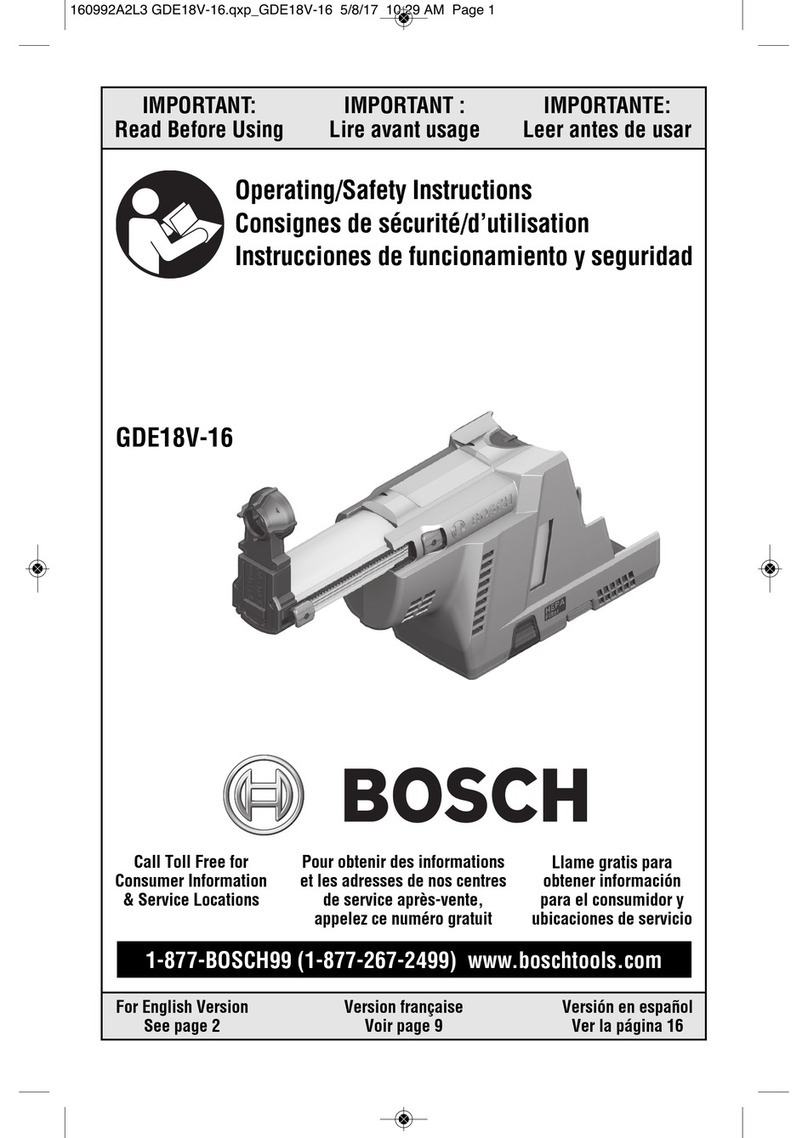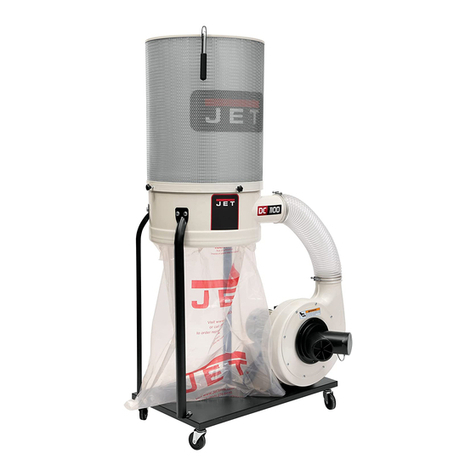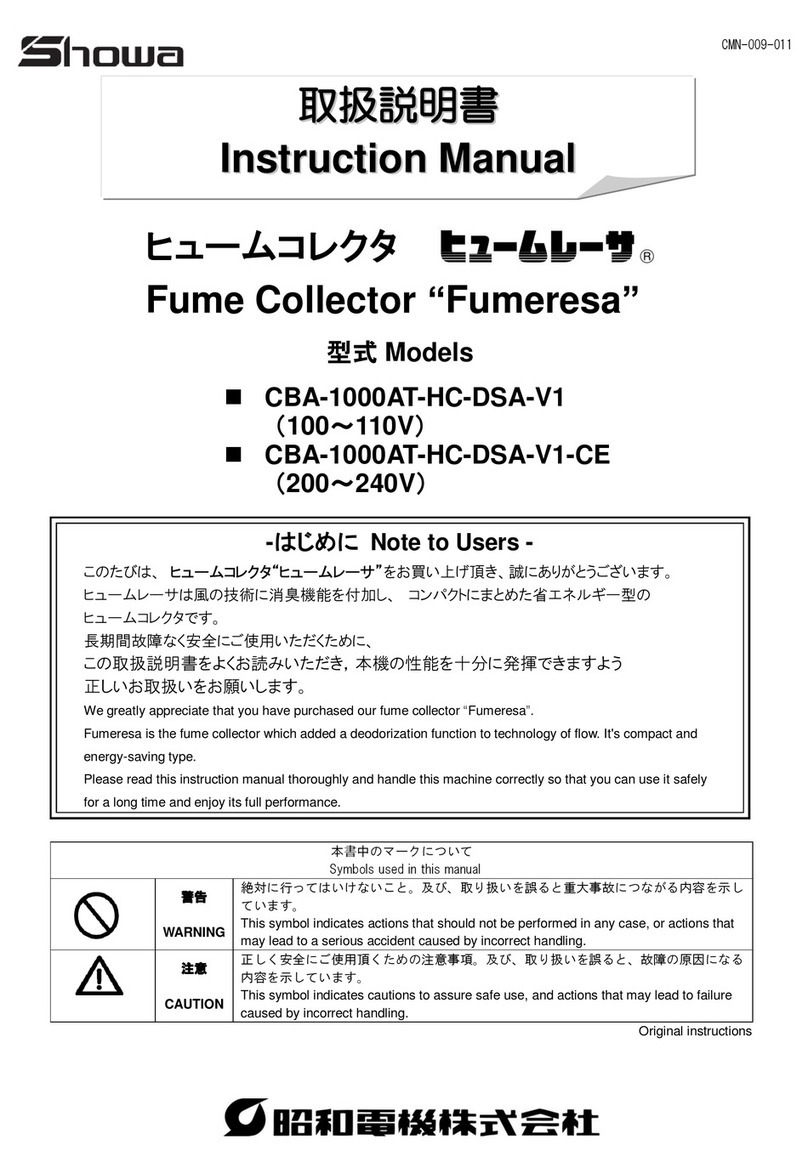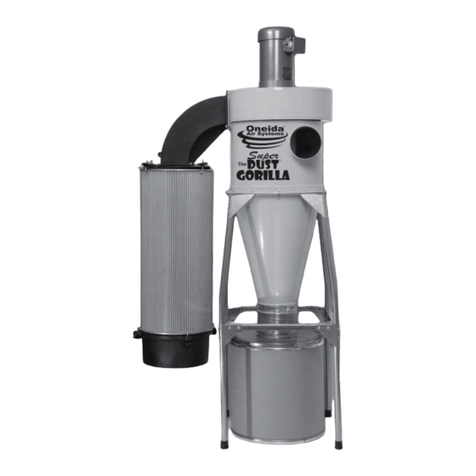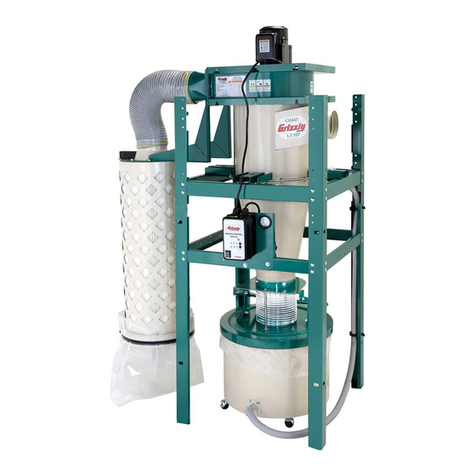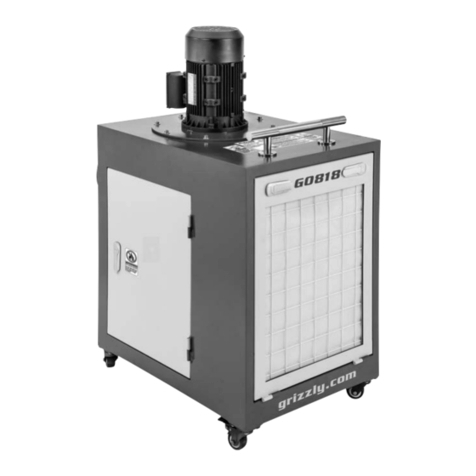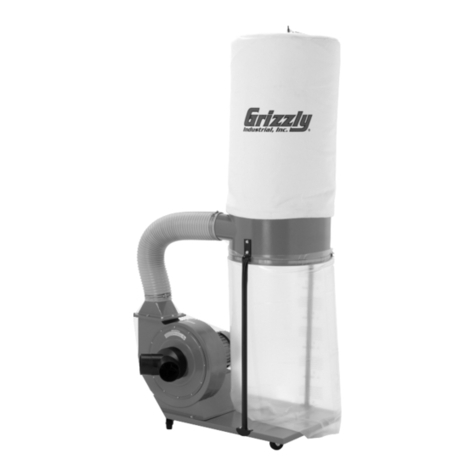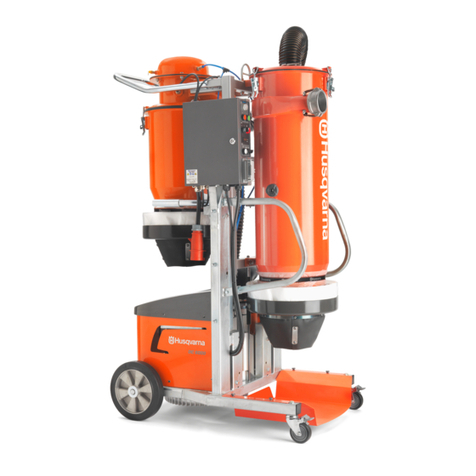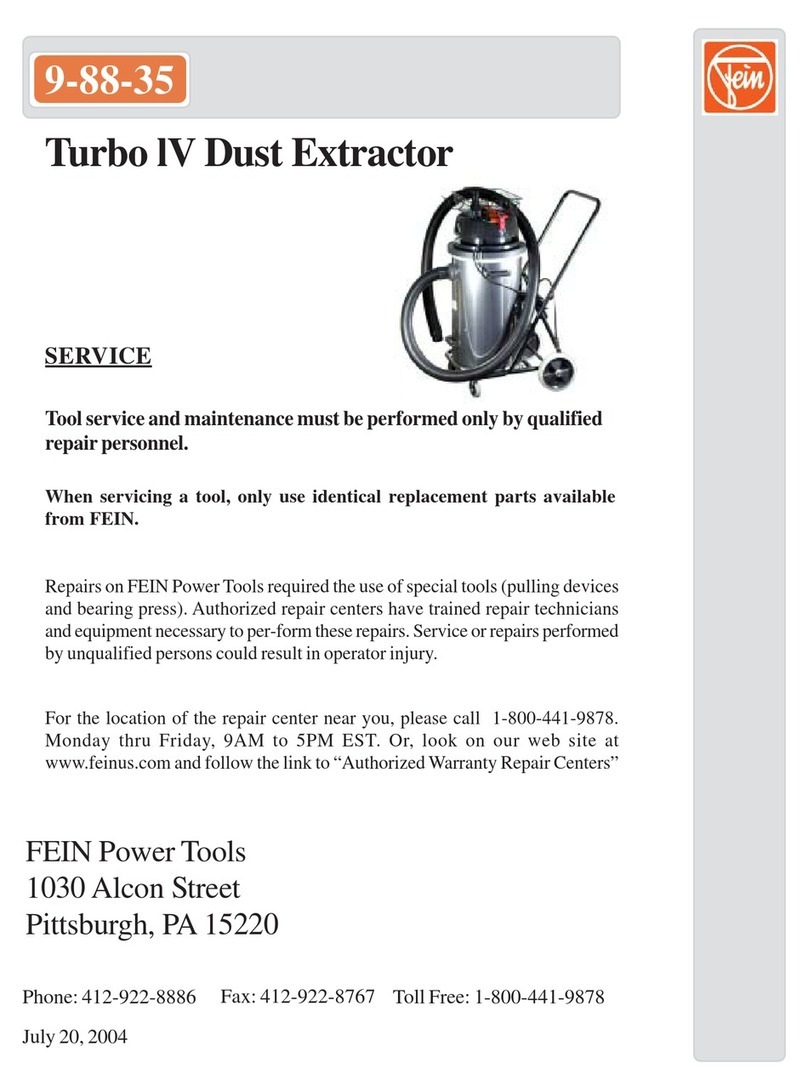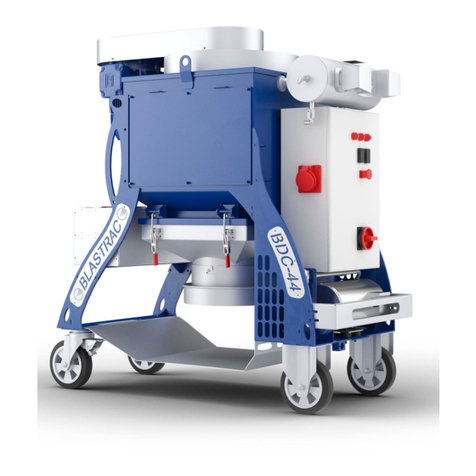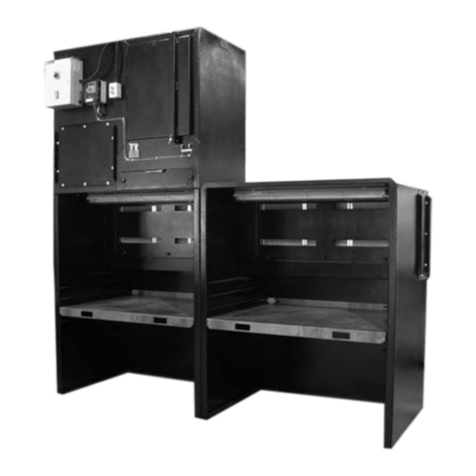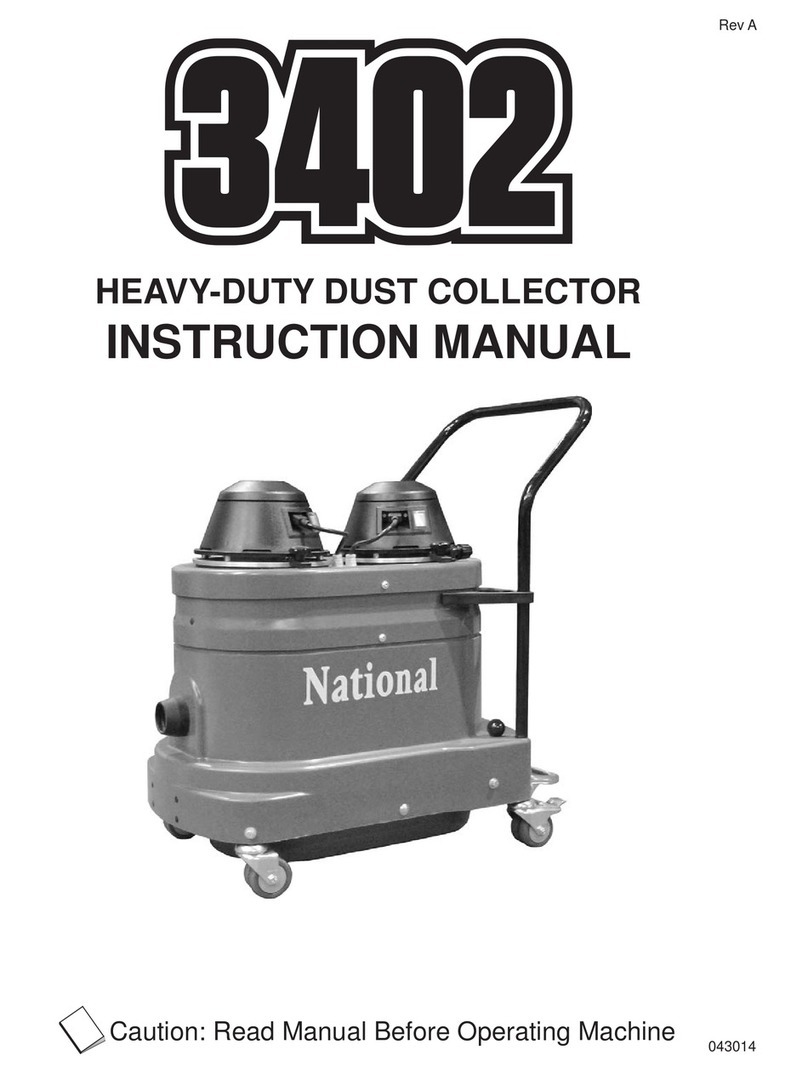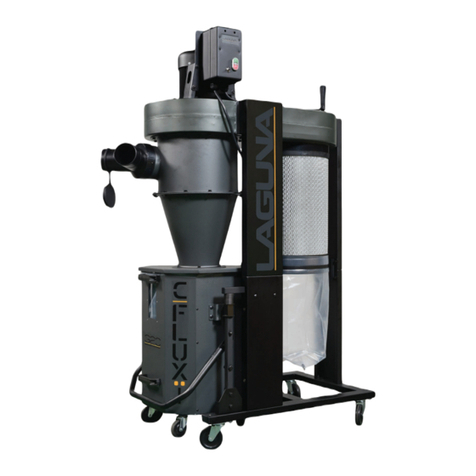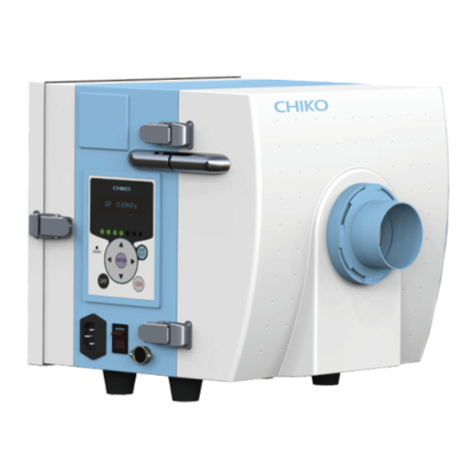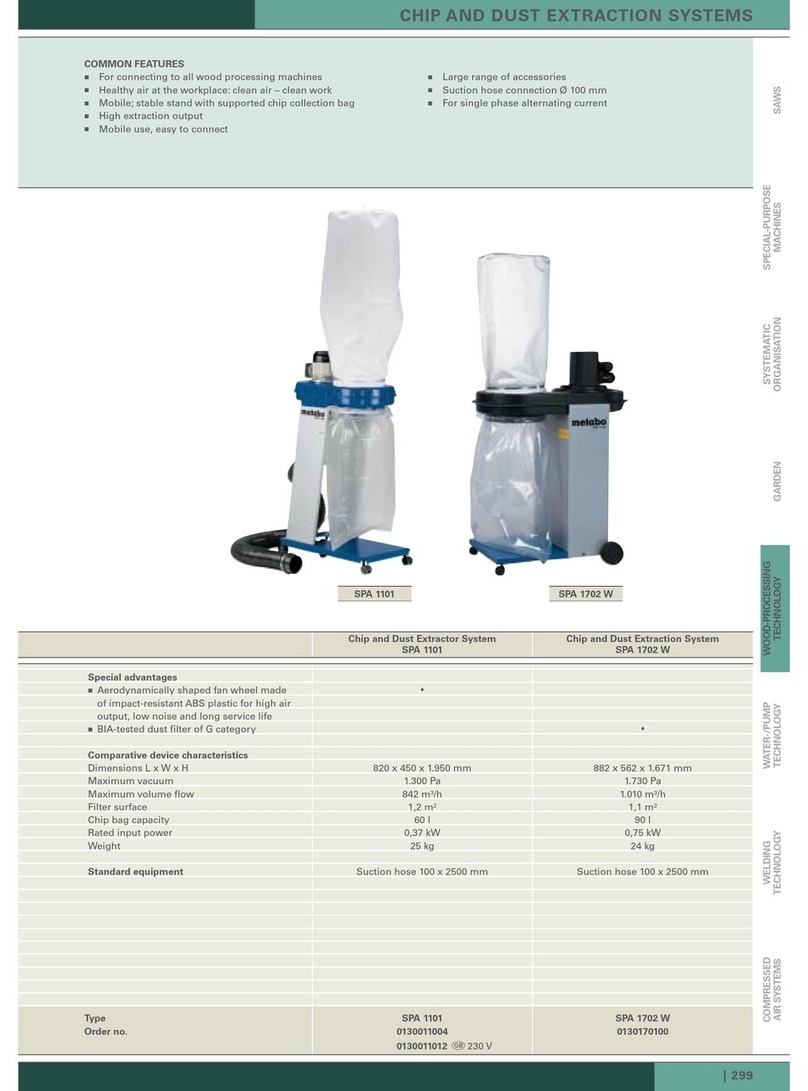
-6- Model G0777/G0777HEP (Mfd. Since 04/19)
The following is a list of common definitions, terms and phrases that relate to dust collection and dust col-
lectors in general. To get the most out of this manual, familiarize yourself with these terms before reading.
Air Suction Capacity:
The maximum volume
of air (rated in CFM) that a dust collector can
move, at the inlet, when fully assembled and
not connected to any ducting.
A secondary length of duct that
connects a dust-producing machine to the
Main Line of a permanent dust collection sys-
tem. The minimum recommended Velocity for
branch lines is 4000 FPM.
The part of the dust col-
lector that holds the majority of captured dust.
CFM (Cubic Feet per Minute):
A measurement
describing the volume of air that moves through
an area in one minute. CFM = Velocity (FPM) x
Cross-Sectional Area of Duct (ft.2).
A type of two-stage dust collector that
uses centrifugal force to remove large dust par-
ticles before they can reach the filter.
Metal/plastic pipe or hose that
connects the dust collector to dust-producing
machines. Typically available in rigid or flexible
options.
The entire assembly of
dust collector, duct, and fittings used to capture
dust from machines.
The part of a dust-producing
machine that connects to dust collection duct.
The part of the dust collector that prevents
the majority of suctioned dust from returning to
the shop environment. Filters are rated by the
size of fine dust (measured in microns) that can
pass through them.
Fittings (Y's, T's, Elbows, etc.):
The various
duct connections that allow the branch and
main lines of a dust collection system to be
routed from the machine to the dust collector.
Duct Grounding: A method of using bare wire
with plastic duct to safely dissipate static elec
tricity buildup during operation.
Main Line: The primary length of duct that con
nects the dust collector to the branch lines of
a permanent dust collection system. The mini
mum recommended Velocity for main lines is
3500 FPM.
Machine CFM Requirement: Indicates the mini
-
mum amount of airflow required at the dust port/
hood of a dust-producing machine for adequate
removal of the waste produced. Essentially, the
performance required by the
System after accounting for the drop in CFM
from the static pressure loss of the duct line
between the machine and the dust collector.
Powered Air Filter: An independently operated
machine that removes fine dust suspended in
the air. Typically operated during and after dust-
producing operations as a secondary method
to improve the air quality in a shop.
Single-Stage Collector: A type of dust collector
where all collected chips and dust are expelled
directly into the filter.
Static Pressure: Expressed in units of inches of
water, this describes the difference in pressure
between the air inside and outside the dust col
-
lector. It is a measure of the suction created by
the blower.
Two-Stage Collector: A type of dust collector
where large/heavy waste is captured in a sepa
rate container before the airflow reaches the
filter. Benefits include longer operation times
between filter maintenance or replacement.
Velocity: The speed of airflow movement, mea
sured in FPM (Feet Per Minute). Velocity =
Volume (CFM) / Cross-Sectional Area of Duct
(ft.2).
Glossary Of Terms

